Red kite 30-year Chilterns project a 'conservation success'
- Published
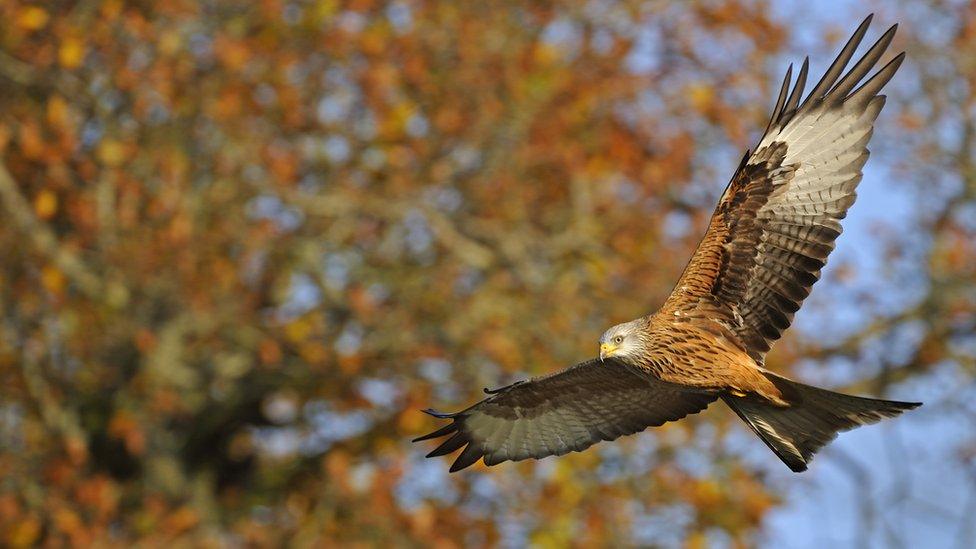
There are now about 10,000 red kites in the UK
The reintroduction of red kites to an area of outstanding natural beauty 30 years ago has been a "true conservation success story", an expert has said.
Numbers of kites had declined over a 200-year period and by the 1980s they were one of only three globally-threatened species in the UK.
Thirteen young birds were brought over from Spain and released in the Chiltern Hills in July 1990.
They are now "thriving", with an estimated 1,800 UK breeding pairs.
The red kite is one of Britain's most distinctive birds of prey, known for its reddish-brown body, angled wings, forked tail, and "mewing" call.
They used to breed across much of the UK, but persecution over the years saw numbers fall as they increasingly became a target for egg collectors.
At one point there were just a few breeding pairs in central Wales.
The Chilterns area was chosen as it met the criteria set out by the International Union for Conservation of Nature (IUCN) for the project.
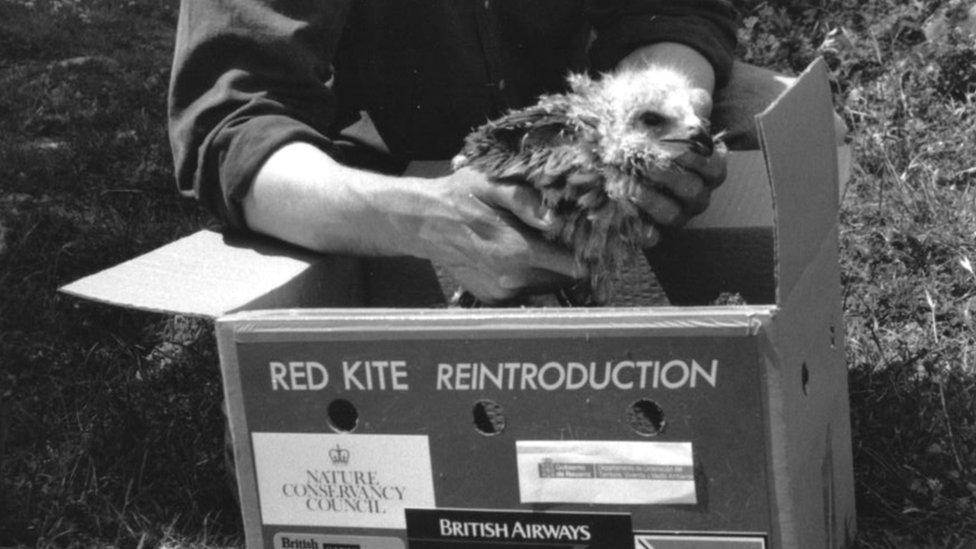
The birds were brought to the UK from Spain
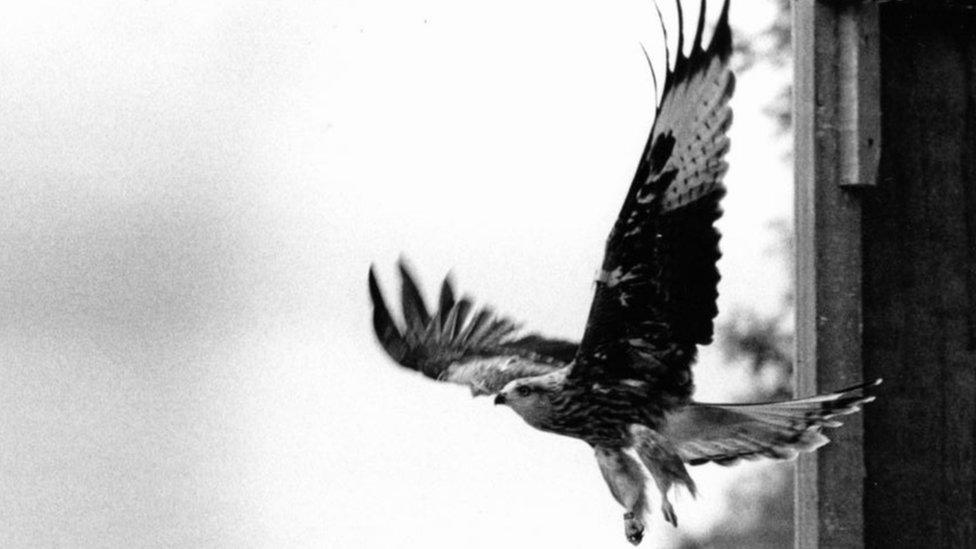
Thirteen young kites were initially released in the Chilterns
The Chiltern Hills were designated an Area of Outstanding Natural Beauty (AONB) in 1965 and stretch from Goring in Oxfordshire, through Buckinghamshire and Bedfordshire, to Hitchin in Hertfordshire.
More birds were introduced and by 1996, at least 37 pairs had bred in southern England.
Red kites can now be seen in most English counties with an estimated 10,000 birds in the UK, including 1,800 breeding pairs.
Tony Juniper, chair of Natural England, said these "most majestic birds of prey" had been "persecuted to near-extinction", but the "pioneering reintroduction programme in the Chilterns stands out as a true conservation success story".
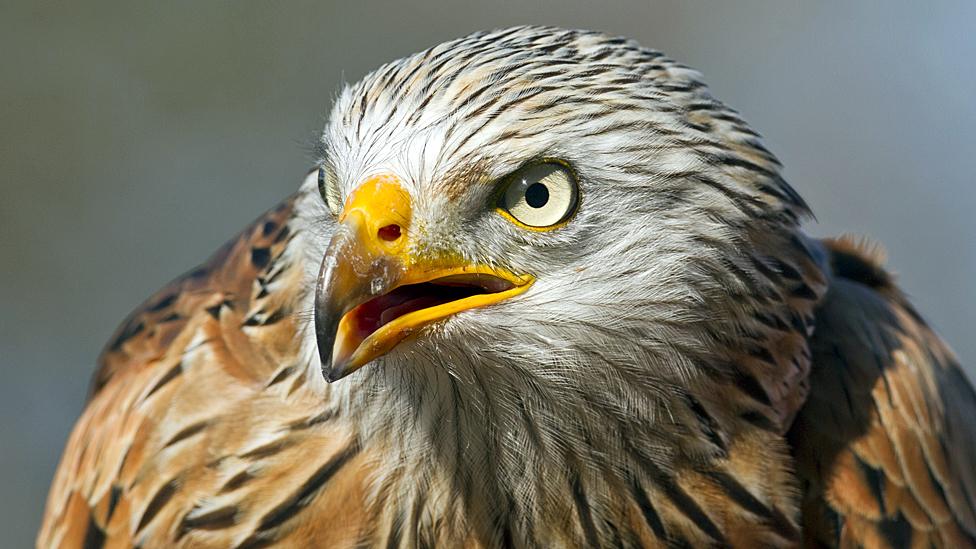
Their reintroduction has been hailed a "conservation success story" by the RSPB
While the "majestic" red kites have been targeted by hunters and egg thieves, they have also had some bad press themselves as numbers have increased.
Reports including the birds swooping on school children as they ate their lunches, and "sweeping up chickens", prompting calls for people to stop feeding them as there was plenty of wild food for them to eat.
However, Jeff Knott, the RSPB's operations director for Central and Eastern England, said the reintroduction project "might be the biggest species success story in UK conservation history", resulting in the "near-extinct" species becoming a "daily sight for millions of people".
The UK is now home to almost 10% of the world population of red kites.
- Published17 October 2019
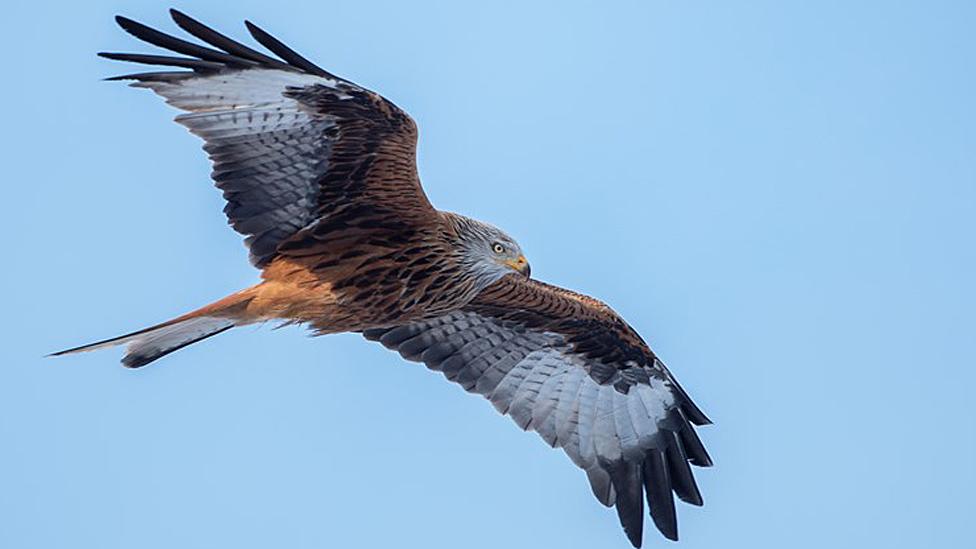
- Published13 March 2019

- Published25 April 2017
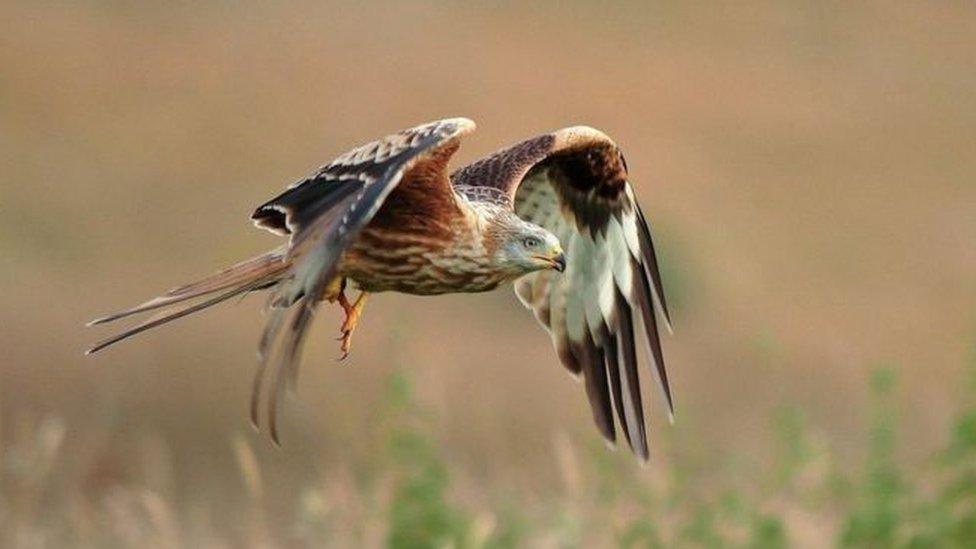
- Published30 January 2012
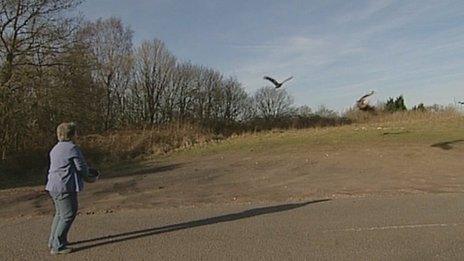
- Published1 June 2011
